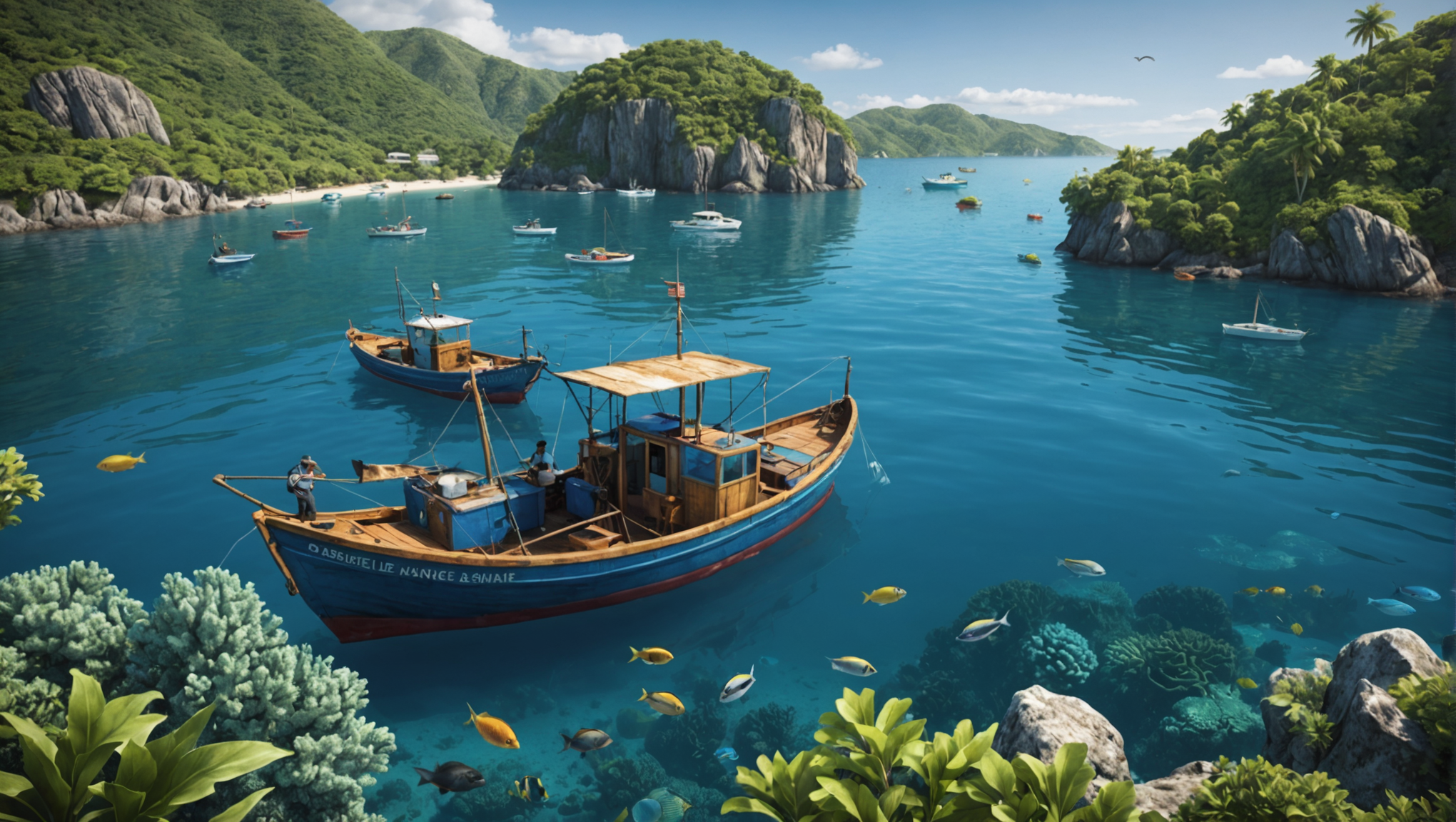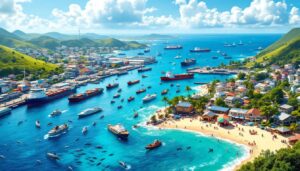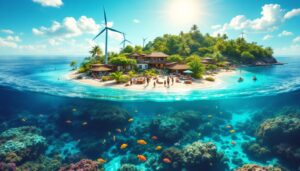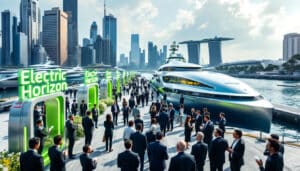The immensity of the oceans holds priceless treasures that could shape our future. L’blue economy emerges as an innovative response to current environmental challenges by highlighting the need for sustainable development based on maritime resources. This ambitious concept revolves around the preservation of marine ecosystems while promoting economic growth. Through practices such as responsible fishing and sustainable aquaculture, the blue economy seeks to balance human needs with ocean health.
The issues linked to this modern maritime economy are multiple. They concern not only economic dimensions, but also political and societal aspects, integrating objectives of sustainable development and fight against climate change. The opportunities offered by this approach are also considerable: job creation, technological innovations and preservation of marine biodiversity. By moving towards integrated and sustainable management of maritime resources, the blue economy represents a promising way to meet the commitments of theAgenda 2030 of the United Nations, while guaranteeing the well-being of future generations.
The blue economy is based on the idea that sustainable management of marine resources can contribute to economic development while preserving ocean ecosystems. This approach aims to generate economic benefits while taking into account the environmental, social and governance issues that make up our maritime world.
Table of Contents
ToggleThe fundamental issues of the blue economy
The first thing to understand about the blue economy is its relationship with. In 2020, a World Bank study estimates that the global marine economy represents around $3,000 billion per year, or 5% of global GDP. However, this figure hides a disturbing reality. Many marine-related activities, such as industrial fishing and shipping, threaten marine biodiversity and cause long-term economic losses. Fish stocks, for example, are declining; 34% of the world’s fisheries resources are overexploited, and this directly impacts the food security of millions of people.
At the heart of these issues are the climate change, which affect not only marine ecosystems, but also coastal populations who depend on these resources. Ocean acidity levels continue to rise, compromising marine habitats like coral reefs, essential for biodiversity. In response to these problems, the blue economy promotes solutions such as the conservation of marine biodiversity and the creation of marine protected areas.
Economic opportunities offered by the blue economy
While the blue economy addresses various challenges, it also presents unique opportunities. For example, sustainable aquaculture is emerging as a key sector. In 2018, the FAO reported that aquaculture accounted for almost half of the fish consumed globally; with sustainable practices, this sector can offer an essential source of protein while minimizing the impact on wild stocks.
Thus, the models of sustainable development also focus on innovative technologies, such as satellite monitoring systems for fisheries management and the preservation of marine ecosystems. Initiatives like using drones to monitor threatened maritime areas show how innovation can strengthen conservation policies while generating local economies.
Strategies for implementing the blue economy
For the deployment of an effective blue economy, it is crucial to create policies that encourage sustainable practices while promoting the engagement of coastal communities. This includes maritime education programs that raise awareness among young people about environmental issues, making them agents of change. Studies show that marine education can transform attitudes toward the environment, cultivating a new generation of ocean defenders.
Adopting a collaborative approach is also essential. THE public-private partnerships prove effective, by mobilizing resources and expertise for common projects. For example, coastal cities can cooperate with businesses to develop sustainable infrastructure that both protects the environment and boosts the local economy.
Another strategy is to strengthen maritime legislation. Compliance with regulations can ensure that fishing practices do not devastate stocks. The expansion of marine protected areas is an example of law in action, ensuring that certain ecosystems remain intact and biodiversity preserved. According to WWF, the blue economy value chain can only truly thrive if these protections are rigorously implemented.
Finally, green technologies must be integrated into all maritime sectors, such as ships powered by renewable energy, which reduce ocean pollution. Innovations like blue financing support these investments, by allocating resources towards projects that promote both economic development and sustainability.
In short, the blue economy offers a framework rich in opportunities to build a future where the sea will no longer be just a place of exploitation, but rather a source of respectfully shared prosperity. For more information on preservation strategies, check out resources like This item which deals with the conservation of marine ecosystems. To explore more about maritime education initiatives, visit this page.

🌊🌍Participation de l’Unité de Gestion du Programme Économie Bleue du Maroc à l’Africa Ocean Week 2024.
— Ministère de l'Economie et des Finances (@financesmaroc) October 17, 2024
🔗https://t.co/fqZl4EN4Gz pic.twitter.com/0JFc9NaVtJ
Blue Economy FAQ: Challenges and Opportunities for Marine Sustainability
What is the blue economy? The blue economy refers to an economic approach that favors the sustainable use of marine resources while promoting economic development and the well-being of coastal communities.
What are the main challenges of the blue economy? The main issues include the sustainable management of marine resources, reducing the impacts of climate change on biodiversity and combating marine pollution.
How does the blue economy contribute to sustainability? The blue economy works to establish sustainable practices in sectors such as fishing and aquaculture, while creating marine protected areas that preserve biodiversity.
What role does the blue economy play in regional development? It can stimulate economic growth and promote responsible use of marine resources, particularly in regions such as the Mediterranean, thereby contributing to the United Nations 2030 Agenda.
How can the blue economy help fight climate change? By helping to safeguard marine ecosystems and promoting sustainable practices, the blue economy helps reduce carbon emissions and protects essential coastal habitats.
What are the technological innovations linked to the blue economy? Innovations include advanced maritime technologies and marine biotechnology practices, which aim to improve the sustainability of maritime activities.
Who are the key players in the blue economy? Stakeholders include governments, NGOs, private companies and local communities, all committed to the preservation of marine resources and sustainable development.
How can we involve young people in the blue economy? Maritime education and community engagement programs can transform young people into champions of marine sustainability by raising awareness of ocean-related issues and opportunities.
What are the challenges related to implementing the blue economy? Challenges include lack of funding, insufficient regulation, as well as the need for a change in mindset among traditional economic actors.
What is blue financing? Blue financing concerns sustainable investments intended to support initiatives related to marine resources and to promote projects that respect the principles of the blue economy.








